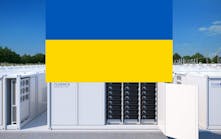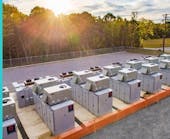NA+ AI: Spectral, Essence Company Collaborating on Sodium-Ion & Hydrogen for Cloud-Based Data Facilities
Sodium-ion (NA+) battery chemistry is emerging as a potential future rival to the currently dominant lithium-ion, and two companies are partnering to try and merge NA+ energy storage, on-site hydrogen production and edge computing technologies to power data centers.
Deep quantum technology platform Spectral Capital is collaborating with Energy Tech LLC (no connection to this publication) on deploying advanced sodium-ion energy storage and hydrogen-on-demand systems. This combination is designed to enable Spectral’s decentralized cloud and edge computing platforms to achieve between 2.5 and 3 MWh power capacity, which the company considers as crucial for artificial intelligence (AI)-driven workloads and quantum infrastructure.
Energy Tech LLC is a company within parent company Essence Global, which is working on commercial-scale hydrogen-on-demand (HoD) technology to generate on-site power. Spectral and EnergyTech are combining technologies to potentially deliver enough net energy to aid grid resiliency as well as on-site power.
Gain Deep Insights on Data Center Energy Needs
Microgrid Knowledge Conference this April in Dallas
“Energy efficiency, including battery back-up optimization and a reliable battery supply that allows on-site energy generation from multiple sources can give Spectral key advantages in lowering net energy costs for its planned data centers,” said Spectral President, Jenifer Osterwalder, in a statement. “Our lean data center footprint, with 1,504 servers planned per center, . . . means we can select sites that wouldn't be suitable from a power viewpoint for large data centers."
Spectral has identified 16 global regions for deployment as part of its Vogon Cloud initiative. Among these regions are Florida, New Zealand and Indonesia, which Spectral Capital and Energy Tech have selected as locations for sodium-ion battery production and decentralized cloud infrastructure expansion.
"By leveraging our proprietary Energy Arbitrage platform. . .we can dynamically balance energy loads, exploit real-time market fluctuations, and optimize cost-efficient power distribution across our global network,” said Sean Michael Brehm, chairman of Spectral Capital. “This ensures that our decentralized AI and quantum cloud operations remain both resilient and economically optimized."
Sodium, noted by the chemical symbol Na (for the Latin ‘natrium’) is the sixth most abundant element in the Earth’s crust. Despite this, one of the roadblocks to commercializing sodium-ion (NA+) battery technology has been that the performance of the sodium-containing cathode declines with repeated discharge and charge.
Researchers at the U.S. Argonne National Laboratory announced recently they have enhanced sodium-ion batteries by preventing cracks in the cathode particles during the synthesis process. This improvement could create what the researchers hope is a cost-effective and sustainable future alternative to lithium-ion batteries for electric vehicles and the grid.
Lithium-ion currently makes up close to 90% of battery storage capacity both in the stationary and transportation electrification sectors. The technology is abundant, but it possesses shorter duration capacity and may be a supply chain challenge in the future.
Another benefit of sodium-ion, under Energy Tech LLC’s technology, is higher thermal stability and less risk of thermal runaway—or fires—for which lithium-ion is known by a few high-profile examples. The battery storage and HoD facilities will be designed to handle Spectral’s AI, hybrid cloud and quantum workloads, according to the reports.
Hydrogen contains no carbon in its chain and thus does not emit CO2 when combusted in power generation applications. Although hydrogen is not mined, it can be generated by separating the H2 from either water, through electrolysis, or methane gas through steam reforming, the latter of which is more carbon intensive.
Green hydrogen is a classification of H2 generated through electrolyzers powered by carbon-free resources such as solar, wind, hydro, nuclear or battery energy.





